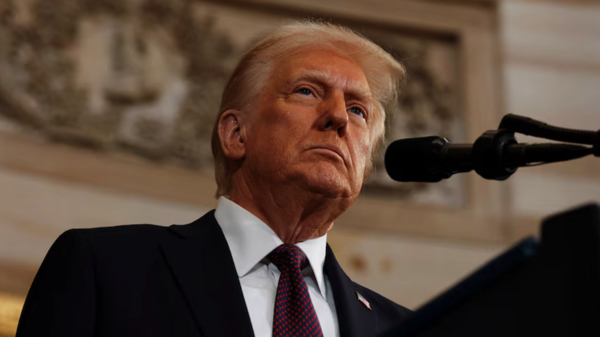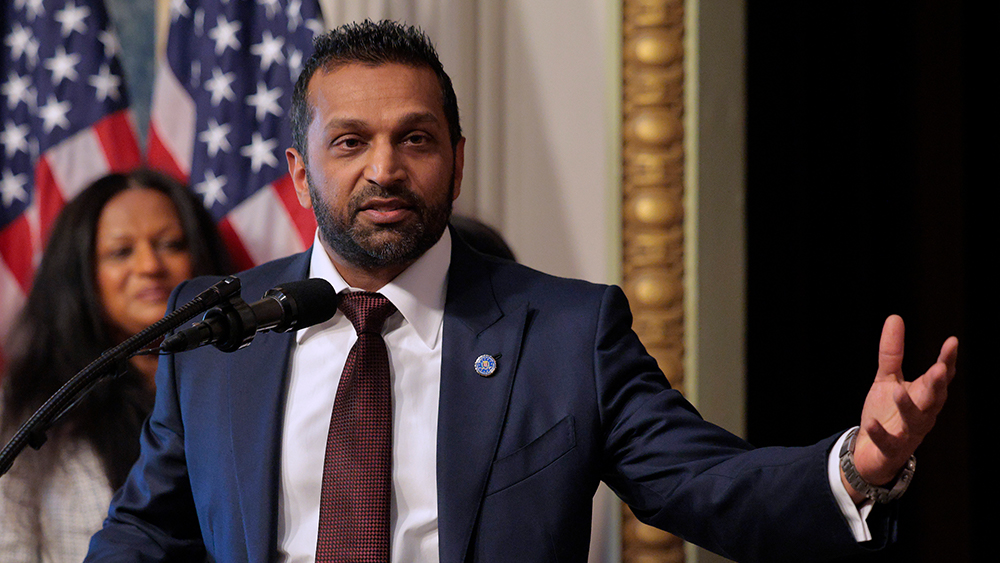The great monetary shift: How China’s push for a “multi-polar” currency system masks a globalist power grab
06/22/2025 / By Lance D Johnson

As the world watches the slow-motion collapse of the U.S. dollar, China’s central bank governor, Pan Gongsheng, has declared the dawn of a “multi-polar international monetary system”—one where the renminbi (and its primary unit Yuan) competes alongside the dollar and euro. But beneath the surface of this seemingly liberating shift lies a darker truth: the same elite power brokers who orchestrated the old financial order are merely repackaging their control under new branding. The Financial Times, Goldman Sachs, and globalist institutions have long telegraphed this transition, framing it as economic progress while quietly tightening the noose of surveillance and exploitation.
Key points:
- China’s central bank governor predicts the rise of a “multi-polar” monetary system, signaling the end of dollar dominance.
- The shift mirrors Goldman Sachs’ decades-old BRICS blueprint, proving this transition was engineered, not organic.
- Despite claims of decentralization, the new system remains controlled by the same globalist elites—now with enhanced surveillance capabilities.
- Historical parallels to the Bretton Woods agreement reveal how monetary shifts consolidate power rather than disperse it.
- The BRICS alliance, far from a rebellion against Western hegemony, is a repackaged globalist project with China at the helm.
The myth of multipolar liberation
Pan Gongsheng’s recent speech in Shanghai framed the decline of the dollar as an inevitable evolution, citing the euro’s rise and China’s growing financial clout since the 2008 crisis. But this narrative ignores the deliberate groundwork laid by institutions like Goldman Sachs, which first coined the term “BRICS” in 2001 as a roadmap for economic realignment. Far from a grassroots movement, the BRICS bloc—now expanded to include South Africa—was always a top-down project, designed to shift economic influence while keeping globalist structures intact.
As Rolo Slavskiy noted in his analysis, multipolarism is not a dismantling of globalism but a rebranding—a system where regional elites enforce the same agenda under different banners. Vladimir Putin, often portrayed as a challenger to Western hegemony, has continued the same globalist policies as his predecessor Boris Yeltsin. The same can be said of China’s Communist Party, which champions “de-dollarization” while constructing a dystopian social credit system that links currency to behavior.
The Bretton Woods playbook repeats
The last major monetary overhaul occurred in 1944 with the Bretton Woods agreement, which cemented the dollar’s dominance as the world’s reserve currency. That system, crafted by Western powers, also birthed the IMF and World Bank—institutions that have since enforced austerity and debt slavery on developing nations. Now, as Pan and European Central Bank President Christine Lagarde discuss a “new global currency order,” history warns that such transitions rarely empower the masses. Instead, they redistribute control among the same financial architects.
Even the proposed use of IMF Special Drawing Rights (SDRs)—a basket of currencies—as an alternative to the dollar raises red flags. SDRs are still governed by the IMF, an institution historically aligned with Western interests. As Sam X of the Uncharted Territory Podcast observed, “Rome never falls. It just moves location and goes underground.” The real power, he argues, remains concentrated in the three City States: London, the Vatican, and Washington, D.C.
BRICS: A Trojan horse for surveillance capitalism
China’s aggressive accumulation of gold—a hedge against dollar collapse—has been framed as a move toward financial sovereignty. Yet, this strategy aligns perfectly with Goldman Sachs’ 2003 prediction that BRICS nations would eclipse Western economies by 2039. What the cheerleaders of this transition omit is the accompanying surveillance infrastructure. A multi-polar currency system won’t just mean competing reserves—it will mean digital IDs, programmable money, and social credit scores dictating access to capital.
The Financial Times, Goldman Sachs, and global central banks aren’t heralding freedom; they’re scripting a more efficient form of control. The question isn’t whether the dollar will fall—it’s who will profit from its demise.
Sources include:
Submit a correction >>
Tagged Under:
Bretton Woods, BRICS, central banks, China, digital currency, Dollar Collapse, economic shift, elite control, financial freedom, Financial Times, global governance, gold accumulation, Goldman Sachs, IMF, monetary system, multipolar world, new world order, social credit, surveillance, World Bank
This article may contain statements that reflect the opinion of the author
RECENT NEWS & ARTICLES
COPYRIGHT © 2018 ENSLAVED.NEWS
All content posted on this site is protected under Free Speech. Enslaved.news is not responsible for content written by contributing authors. The information on this site is provided for educational and entertainment purposes only. It is not intended as a substitute for professional advice of any kind. Enslaved.news assumes no responsibility for the use or misuse of this material. All trademarks, registered trademarks and service marks mentioned on this site are the property of their respective owners.




















